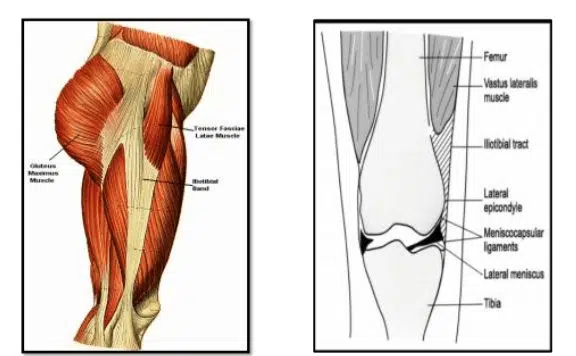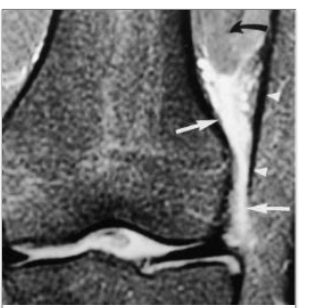Knee Pain (Iliotibial Band Syndrome)
- Most common cause knee pain or more specifically lateral knee pain in runners (4-7% of running injuries)
- Pain is usually diffuse and localised to the iliotibial band and lateral femoral epicondyle region (on rare occasion at other end of ITB à hip pain)
- Typically, occurs after a run or several minutes into a run (does not warm up!)
- Pain is aggravated with repetitive flexion and extension of the knee and often the knee pain exacerbated while running down hills; sitting for long periods of time with the knee flexed; or standing for long periods

Aetiology
- Widely considered to be due to friction from rubbing on lateral epicondyle of the femur during knee flexion and extension
- More likely to relate to compression of the ITB against the epicondyle and irritation of the richly innervated and vascularised adipose tissue
Factors associated with the condition:
Combination of biomechanics and training errors – research limited or weak.
Assumed factors:
- High weekly running or cycling mileage
- Too much, too soon
- Weakness of hip abductors; hip extensors; hip external rotators; and increased tension of hip flexors and ITB
Diagnosis
Based primarily on subjective and objective findings. Pain with repeated flexion and extension of the knee while the practitioner palpates the lateral femoral epicondyle.

Imaging
- MRI
- MSkUS: findings are non-specific
Differential
- Myofascial pain (Trigger points in VL)
- Biceps Femoris Tendinopathy
- Patellofemoral pain
- Degenerative joint disease
- Lateral Meniscal Tear
- Referred pain from lumbar spine
Management
- Initial anti-inflammatory (anti-proliferative??) management (NSAIDS; CSI; rest)
